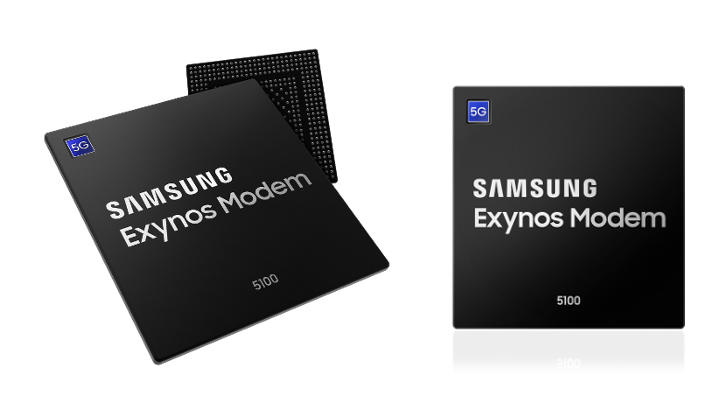In the ongoing battle to be at the forefront of 5G, Samsung has shot into a prominent position with the Exynos Modem 5100. The electronics company and chipset manufacturer today revealed a mobile modem built to the newest 3GPP-official 5G standards that features not only 5G functionality (using both sub-6GHz and mmWave spectrum), but also support for legacy wireless technology from 4G LTE all the way back to 2G GSM/CDMA.
This bests Qualcomm's X50 modem, which is already on the market but requires the help of the LTE modem present in the phone's Snapdragon SoC to provide multi-mode 4G/5G connectivity. The main example of a consumer product using this system so far is the Moto Z3 and its matching 5G Moto Mod, which uses a separate chip for LTE connectivity.
Intel's first commercial 5G modem, the XMM8060, will also be multi-mode like Samsung's. Qualcomm's got its own integrated solution in the works for the X50 line, but it won't be out until sometime in 2019.
Samsung is advertising peak download speeds of up to 2Gbps using sub-6GHz spectrum and 6Gbps using mmWave spectrum. As for 4G networks, the modem's peak download speed is 1.6Gbps. While all of that is impressive, it's important to remember that real-world speeds — affected by a number of variables including traffic and interference — will be much slower.
The modem is compatible with the most recent standard specification for 5G New Radio (5GNR) — Release 15 — from global standards body 3GPP.
While Samsung doesn't specify the exact size of the modem, it's built on 10-nanometer technology, which is currently the smallest commercial fabrication process. This allows for a compact size, and Samsung's also touting increased power efficiency.
The manufacturing giant says it successfully conducted an over-the-air 5GNR data call using a prototype device containing the 5100 and a 5G base station. It expects the chipset to be available commercially by the end of 2018. That's an aggressive timeline, to be sure, but it makes sense if Samsung wants to maintain a lead in the race to 5G.
Source: Samsung

